Nestled in the southernmost part of Mexico close to Guatemala, Chiapas offers a unique blend of adventure, culture, and natural beauty. Although it’s one of the poorest and least developed states, it’s also where you can get closest to the indigenous cultures of Mexico.
In the travel guide to Chiapas, I’ll tell you everything you need to know. From the charming colonial cities to the ancient Mayan ruins, there is so much to discover and experience in Chiapas, so let’s get into it.
Plan your trip to Chiapas
What to Expect in Chiapas Mexico
If you’re looking for the typical lay-on-the-beach or stay-at-the-resort vacation that a lot of people associate with Mexico, Chiapas is probably not the place for you. However, if you are a lover of adventure, culture, and breathtaking scenery, then you have come to the right place.
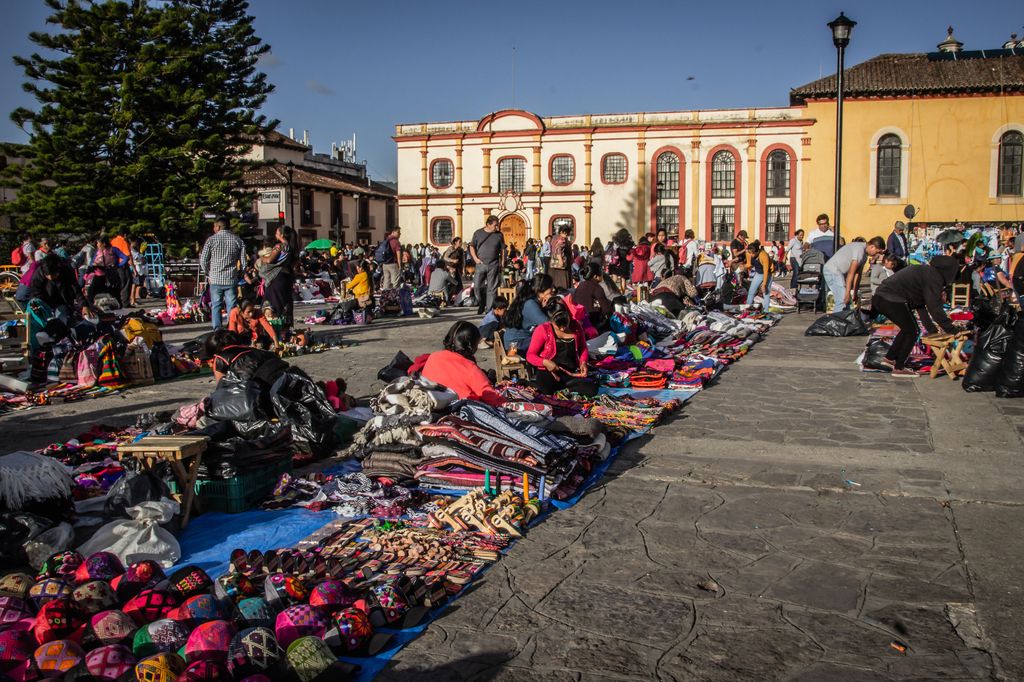
Chiapas (pronunciation: chee·a·puhs) is one of the most unique states in all of Mexico. Having one of the biggest indigenous populations and being one of the least developed regions, it sometimes reminds me a bit more of nearby Guatemala than of the relatively wealthier Mexican states.
Chiapas has a rich history shaped by both Mayan and Spanish influences and is home to a diverse mix of indigenous cultures, natural wonders, and colonial cities. Many areas of Chiapas are semi-independent, giving Chiapas its own unique identity.
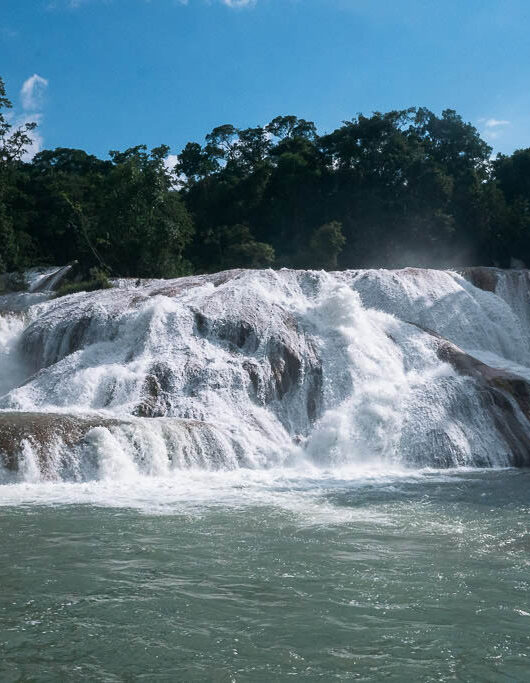
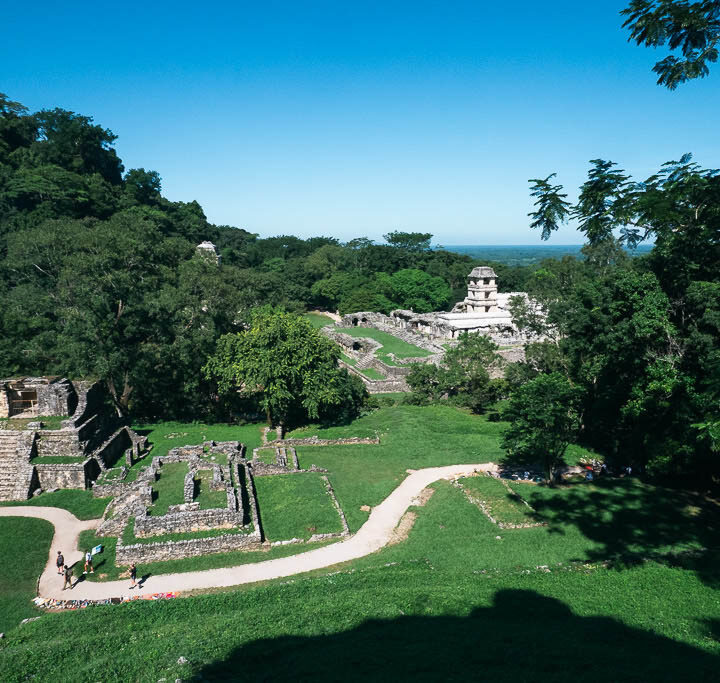
Chiapas has two very different climatic zones: the tropical lowlands and the mild subtropical highland climate. One day you might be sweating it in the jungles, the next you may find yourself enjoying a cool breeze among the pine trees. So be sure to pack for different weather conditions!
Chiapas is worthy of a trip on its own, though it can also perfectly connect the regions of Oaxaca and the Yucatan if you’re on a bigger Mexico trip.
It’s one of the last stops many backpackers make when traveling through Mexico and down to Central America, and it’s easy to see why it’s a fixture on the backpacker trail. From the vibrant and soulful city of San Cristobal de las Casas to the ancient ruins of Palenque, every corner of Chiapas is full of wonder and discovery.
Best Tours in Chiapas
It’s wonderful to explore Chiapas independently, though certain experiences are better with (or only practical with) a guided tour. Be sure to keep some space in your itinerary for these highly worthwhile tours.
- Sumidero Canyon: You shouldn’t miss seeing the spectacular scenery in Sumidero Canyon! This tour will pick you up from your hotel in San Cristobal and take you to the viewpoints. The boat tour between the canyon’s walls is a phenomenal experience.
- Palenque Ruins and Waterfalls: Visiting the Mayan ruins of Palenque and the nearby waterfalls will let you see several of the best highlights in northern Chiapas in a single day. While some of these sights can be seen using public transport, it takes a lot longer, so a tour is the most efficient sightseeing option in Palenque.
- San Juan Chamula: A visit to this small Tzotzil community may be one of the most unique travel experiences you’ll ever have. The community mixes Catholicism with native beliefs and you’ll have a chance to witness their ancient rituals. You can join a small-group full-day tour departing from San Cristobal.
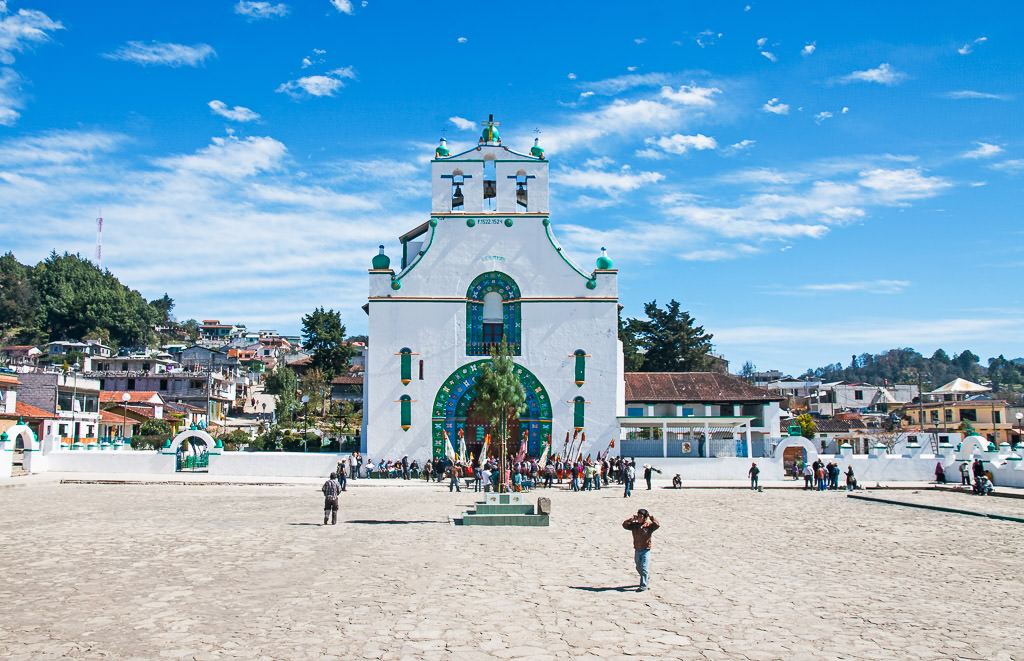
How to Get to Chiapas
There are a few different options for getting to Chiapas, depending on where you’re coming from.
By Bus
If you’re already in Mexico, the most convenient way is by bus. Several bus companies offer routes to Chiapas from major cities like Cancun, Oaxaca, and Mexico City. But keep in mind that the bus rides can be long.
From the Yucatan: One of the most popular routes is from Cancun to Palenque, which takes around 11 hours. It’s a long journey, but the views along the way are well worth it. (In 2024, Mexico inaugurated the Tren Maya, a train that connects Cancun to Palenque in just 4 hours. At the time of writing they’re still working out the kinks, so the service is not so reliable, but this is expected to improve.)
From Oaxaca: Another popular journey for travelers is from Oaxaca City or Puerto Escondido in Oaxaca to San Cristobal de las Casas in Chiapas. This bus ride takes around 12.5 hours. Unfortunately, there aren’t any places of major tourist interest that can help break up the journey. I’ve done this trip twice now: both times I took a night bus so as not to lose too much time.
By Air
You can also snag a domestic flight to the airport in Tuxtla Gutierrez. When searching for flights you may need to search for its official name: Ángel Albino Corzo Airport.
There are also a handful of flights to Tapachula airport in the very south of the state. However, don’t count on there being flights to/from Palenque, as this airport closed during the pandemic and hasn’t reopened since. The nearest airport to Palenque is in Villahermosa in neighboring Tabasco state.
For those coming from outside of Mexico, the easiest way to get to Chiapas is by flying into Mexico City and then taking a connecting flight or bus down to Chiapas.
From Guatemala
Chiapas is a popular stop for those traveling overland through Central America. If you’re coming from Guatemala, you will most likely take an overnight bus or a local ‘chicken bus’. The border crossings can be a bit hectic; expect delays. You can find details on cross-border buses here.
Things to See and Do in Chiapas
Chiapas is a a unique state in Mexico—one way, you have Mayan ruins hidden in the lowland jungles, and the other way, you have some of the tallest mountains in the country. You can expect some wonderful variety and a lot of great things to see and do.
Here I’ll give an overview, but be sure to dig into my specific guides with more detail.
San Cristóbal
San Cristóbal is the most popular city in Chiapas, and for good reason. Its colorful colonial buildings, cobblestone streets, and lively markets make it a must-visit. Located in the central highlands of Chiapas, it has a strong indigenous presence, making it an incredibly interesting cultural hub.
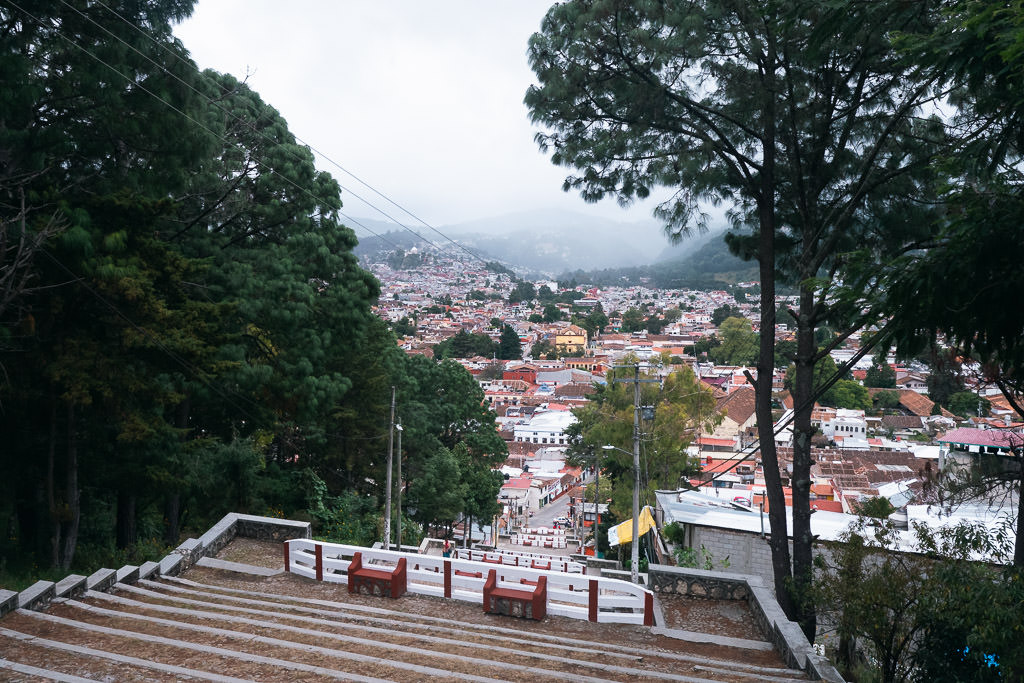
It’s also super cheap here. You can easily find budget accommodation and delicious street food for a fraction of the cost compared to other cities in Mexico. It honestly makes it so hard when you start out in Chiapas because you’ll think the rest of Mexico is as affordable, but unfortunately, that’s not always the case. So enjoy it while it lasts!
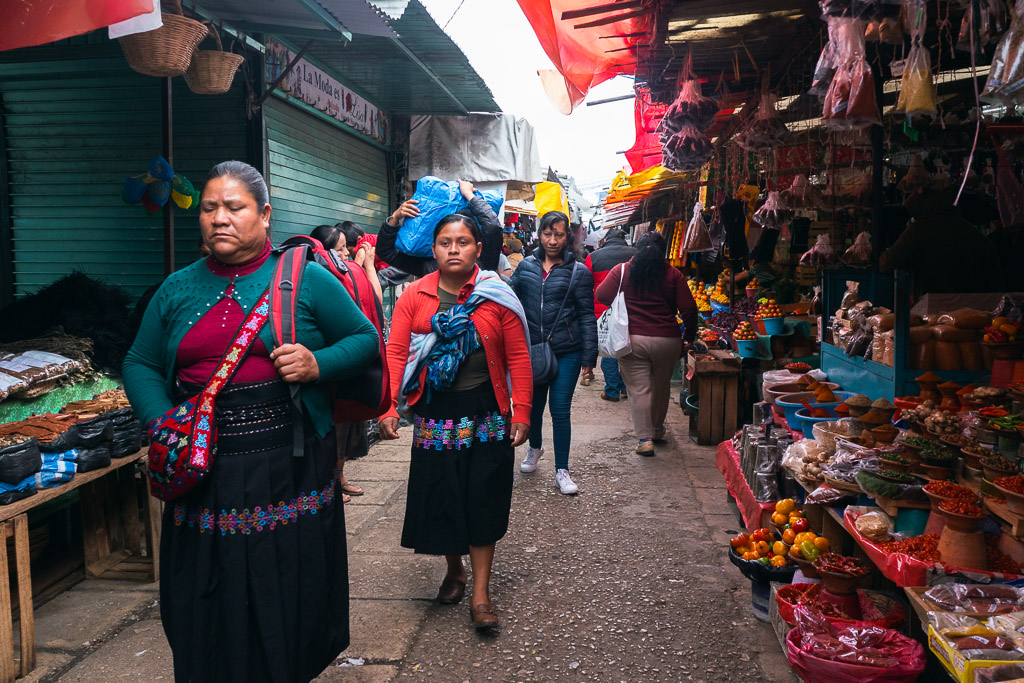
You can spend your days walking around the city, exploring the markets and admiring the architecture. The surrounding nature is stunning, with impressive caves and hiking trails just a short bus ride away.
Palenque
Another must-visit in Chiapas is the ancient Mayan city of Palenque. This archaeological site is surrounded by a lush jungle, adding to its mysterious and enchanting atmosphere. You can spend several hours wandering through the ruins, imagining what life was like thousands of years ago.
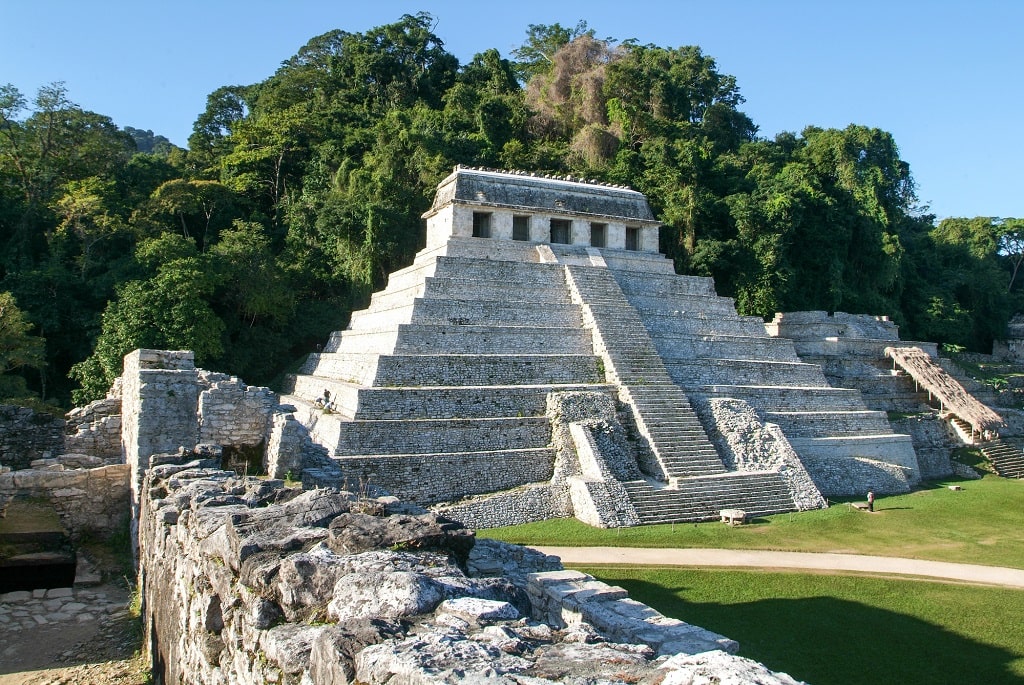
But Palenque isn’t just about the ruins — it’s also a hub for eco-tourism. You can go on guided hikes through the jungle, visit nearby waterfalls, or even take a dip in natural pools.
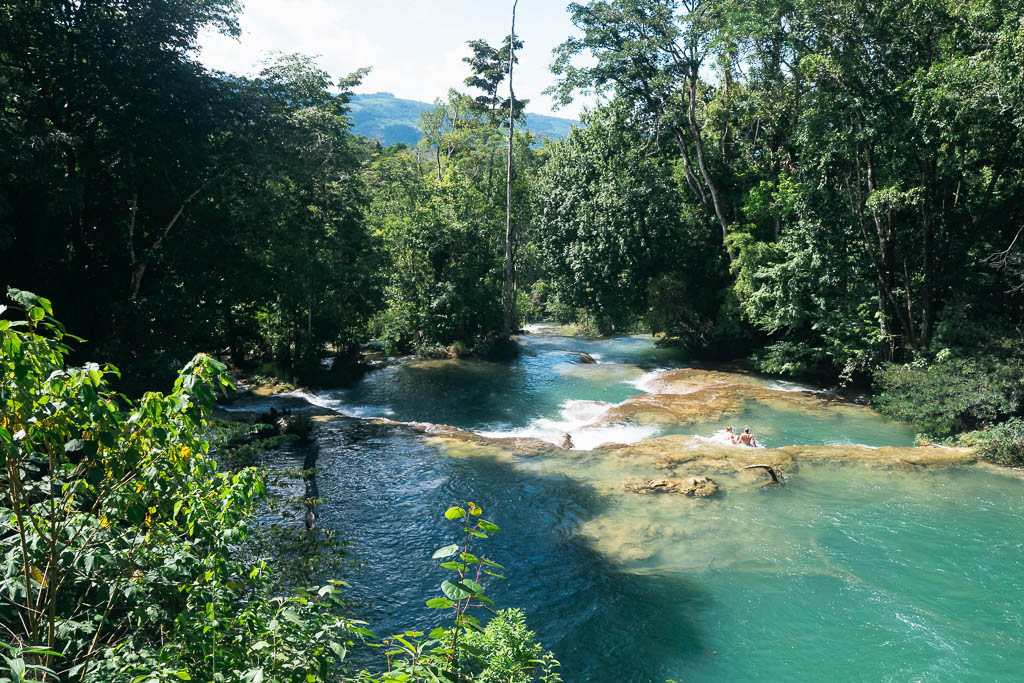
While the town of Palenque lacks the overwhelming charm of San Cristobal, I would argue it’s at least as good a base for excursions, especially if you are into exploring the rainforest environments.
One special experience here is to visit the lands of the Lacandón tribes, where one of the white-robed locals can show you the interesting flora and fauna hiding in the forests.
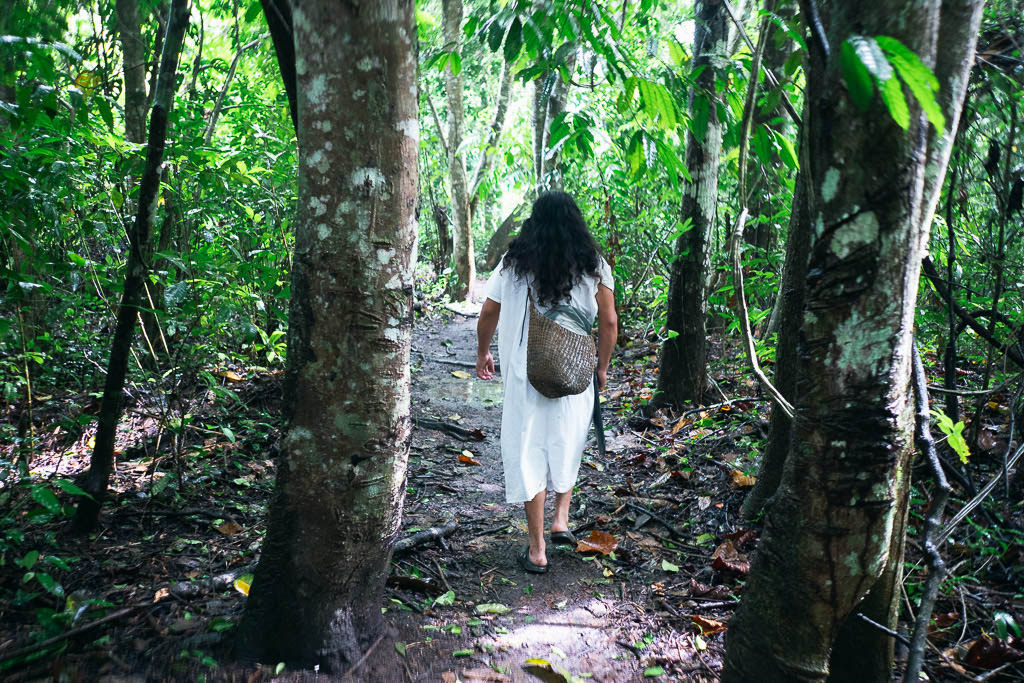
Loads of people visit Palenque from the Yucatan Peninsula because it’s relatively close and the ruins offer an alternative to the famous Chichen Itza. Many tourists stay for just one night only to see the Palenque ruins. However, I highly recommend spending at least two days if you can, if only to be able to visit the phenomenal waterfalls.
Sumidero Canyon
The most popular day trip from San Cris is the Sumidero Canyon, located about an hour and a half away. This impressive canyon is over 1,000 meters deep and runs for 35 kilometers. Taking a boat ride through Sumidero Canyon is a can’t-miss activity in Chiapas.
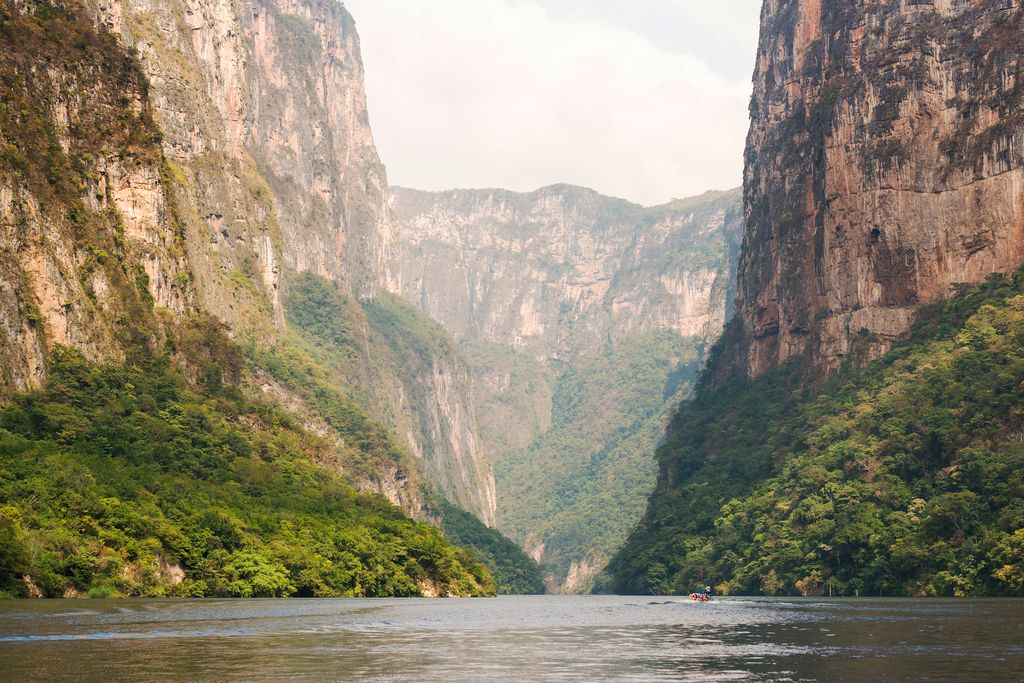
You’ll make your way down the river, with the canyon walls towering over you, spotting wildlife and learning about the area’s history and geology from your guide. You may see monkeys swinging from trees and even an alarming number of crocodiles along the riverbank (don’t worry, you’ll be safe).
If you’re feeling extra adventurous, you can also go on a guided hike through the canyon, taking in the views from a different perspective.
Agua Azul Waterfalls
These stunning waterfalls feature bright blue cascading water surrounded by a green jungle. Many tours stop here on their way to Palenque, but it’s also possible to visit on your own if you are not in too much of a hurry.
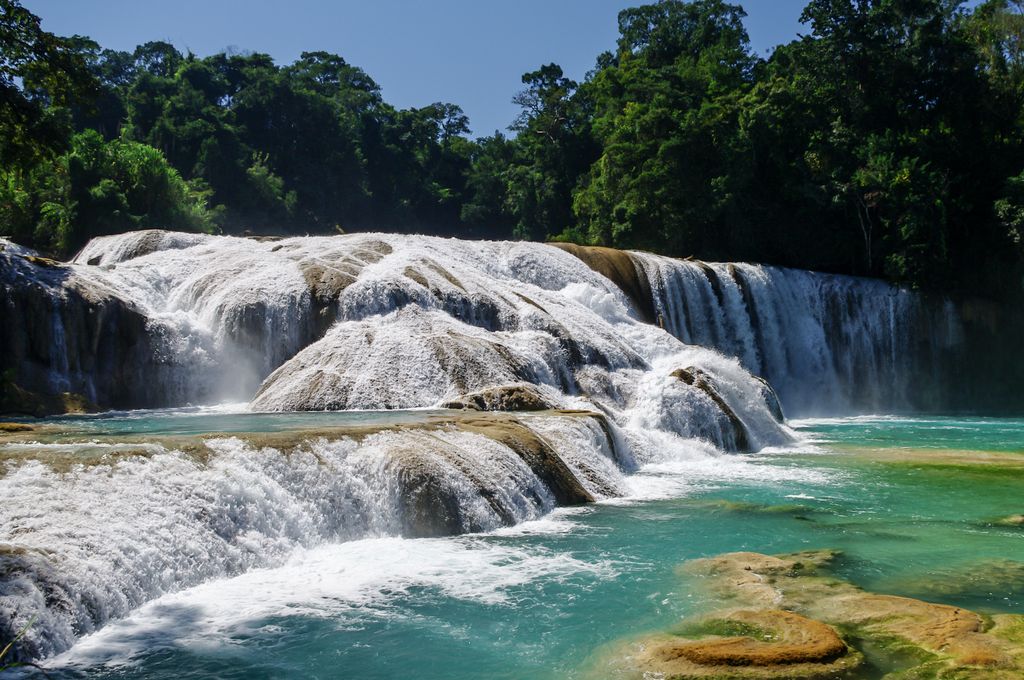
There are several different levels of waterfalls to explore and a few of them you can swim in. It’s gorgeous, and the water looks like cool blue Gatorade (during the dry season, in the wet season, it’s a little muddy), but do keep in mind this is one of the most popular tourist sites in Chiapas, so it can feel a bit crowded and commercialized.
If you want to escape the crowds, I recommend visiting early in the morning or later in the afternoon when most tours have left. You can also read about some lesser-known waterfalls in my guide to Palenque.
El Chiflón Waterfall
Another popular waterfall in Chiapas is El Chiflón, located near the town of Comitán. This impressive set of waterfalls has 5 levels, with the highest reaching up to 120 meters. The water is a beautiful turquoise color, and if you go on a tour, they will usually guide you to an area to go for a dip.
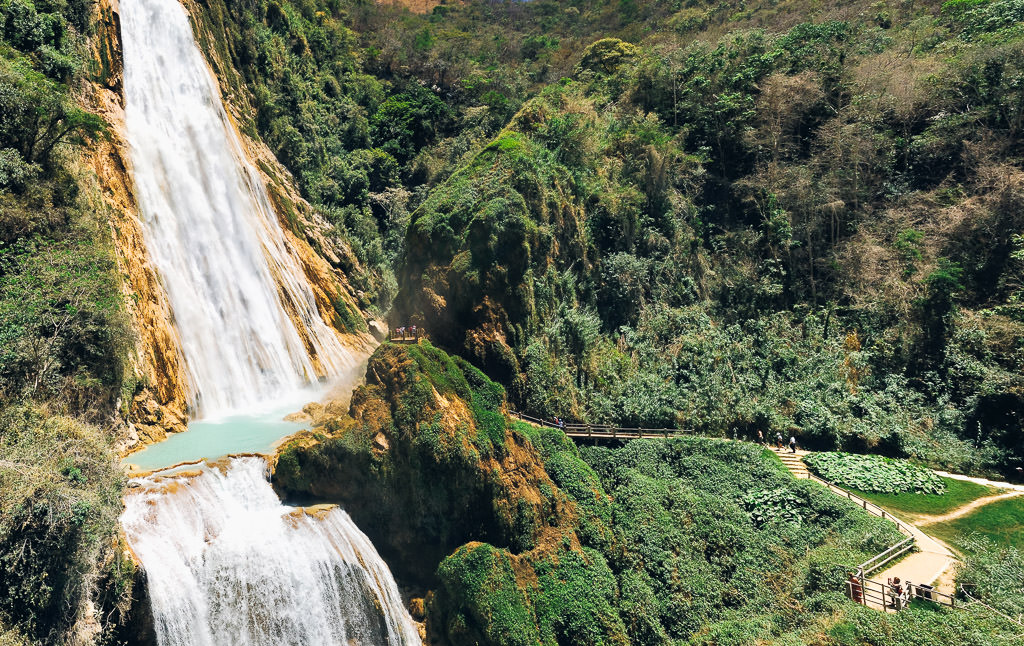
The El Chiflon tour is typically paired with a stop at the nearby Montebello Lakes. The lakes in the national park are multicolored with deep blues and greens, and you can take rafts from one side of the lake to the other.
And if you need more than just a hike and some picture-worthy views, you can get an adrenaline fix by ziplining through the waterfalls.
Visit the Pueblo Magicos of Chiapas
If you’re unfamiliar with the term, Pueblo Magicos are small towns or villages in Mexico recognized for their cultural and historical significance. Lucky for us, Chiapas is home to 6 of them!
Each one offers a different experience, from the colorful streets of San Cristobal de Las Casas to the ancient ruins of Palenque. And with their close proximity, it’s easy to visit multiple Pueblos Magicos in one trip.
One of my favorites is Chiapa de Corzo, just because it’s so different from any other town. It’s only about a 10-minute drive from the airport, and you may pass by it on the way to Sumidero Canyon. With its Moorish-style architecture, it feels more like Seville than a small town in Mexico.
Visit Comitán
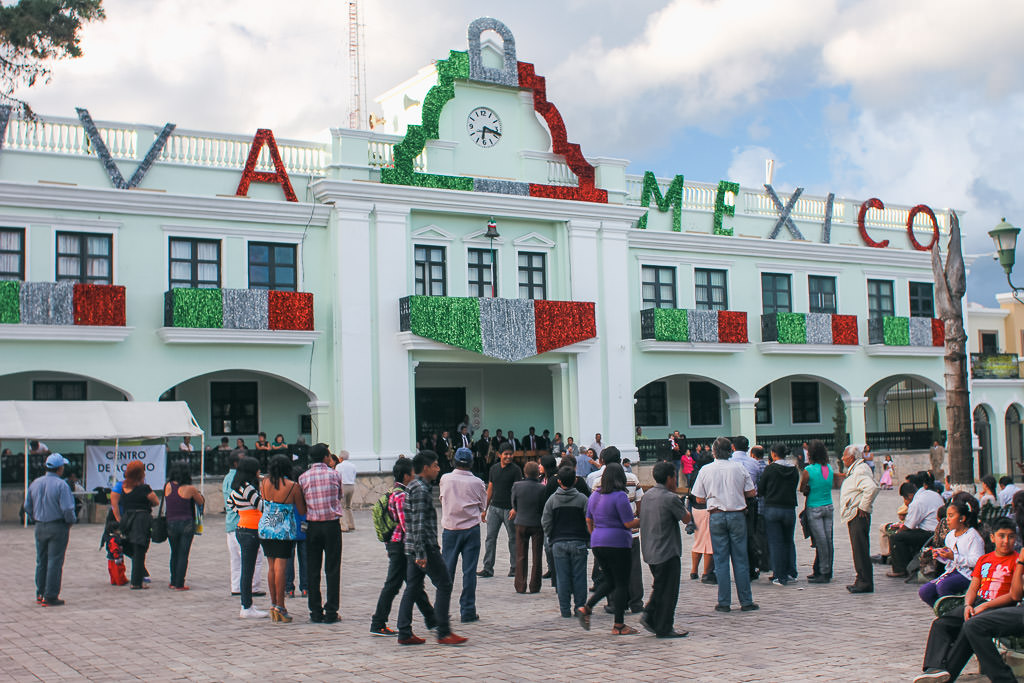
While San Cris and Palenque are the main tourist highlights in the region, if you’re looking for somewhere nice but off the radar, consider a stay in Comitán.
I really enjoyed this untouristy town which has a beautiful main square, colonial-era architecture, small museums, and some viewpoints. Most of all it’s a great springboard into the more remote corners of Chiapas, including the El Chiflón waterfalls and Las Nubes ecotourism area.
Is Chiapas Safe?
Unfortunately, Chiapas is sometimes perceived as unsafe due to political issues and past conflicts (dating back to the 1990s!) but has seen improvements in recent years.
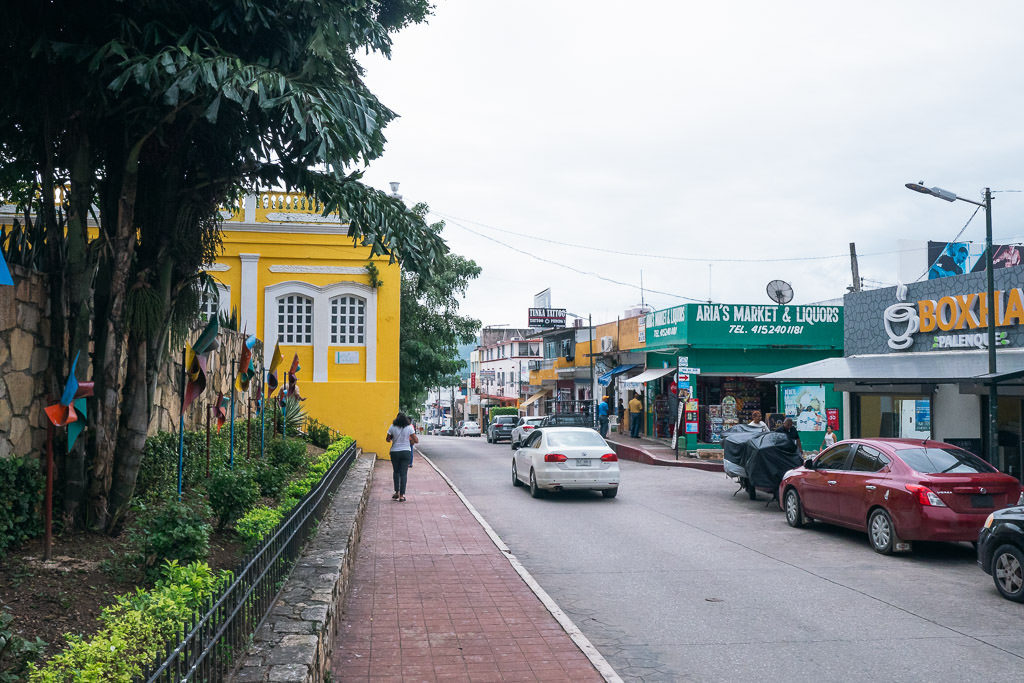
The government has increased security measures on highways and roads, making travel to Chiapas safer. While some remote areas may be experiencing escalations, popular tourist spots like Palenque and San Cristobal remain safe.
Note that certain remote ruins like Yaxchilan, Bonampak, and Tonina may be inaccessible due to ongoing problems. Rest assured, tours do not depart for these sites unless the safety situation is assured. If you’re planning to go by yourself, make sure you’re properly informed through local sources before heading off.
With that said, Chiapas is a safe state to visit as a tourist overall, particularly when venturing along the established tourist trail.
How Many Days Do You Need in Chiapas?
This really depends on the pace of your trip and how many places and things you want to see and do! Many travelers easily get stuck in San Cristobal de las Casas for a week or more, just soaking up the relaxed vibe and exploring the surrounding villages.

For a well-rounded trip, I recommend spending at least five days in Chiapas. This would give you enough time to visit a few of the Pueblos Magicos and see some of the main attractions, like Sumidero Canyon and Palenque. However, if you have the time and flexibility, it’s always worth extending your stay to fully embrace Chiapas.
What is the Cost of Traveling in Chiapas?
One of the best things about Chiapas is that it’s a budget-friendly destination. Accommodations, food, and activities are all the prices you would expect in Mexico. A comfortable budget for a day would be around $30-50 USD, which would cover a nice hotel or Airbnb, three meals, and some activities or transportation.
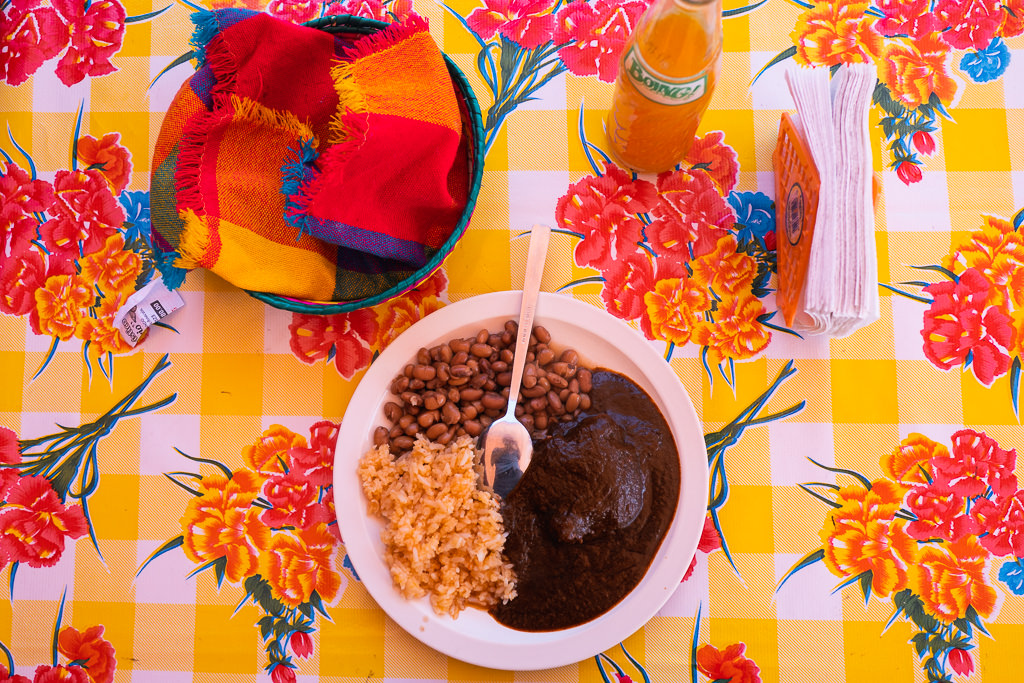
Of course, this cost can vary depending on your travel style and preferences. If you want to stay in luxury accommodations and dine at high-end restaurants, the cost will increase accordingly. But overall, Chiapas is a great place to explore without breaking the bank.
Some links may be affiliate links, meaning I may earn commission from products or services I recommend. For more, see site policies.
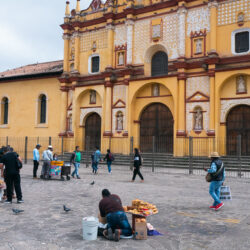

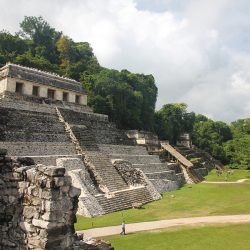





0 comments
Leave a comment
Your email address will not be published. Comments are manually moderated.